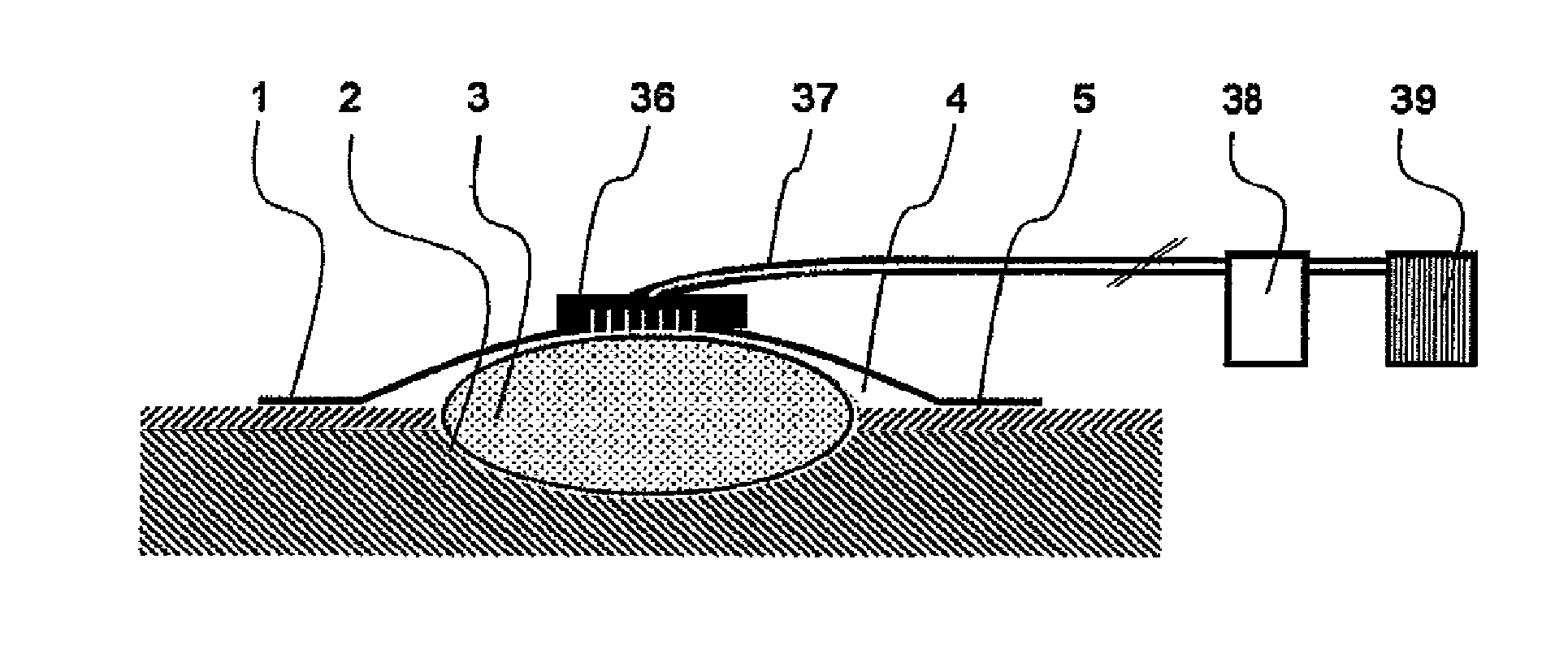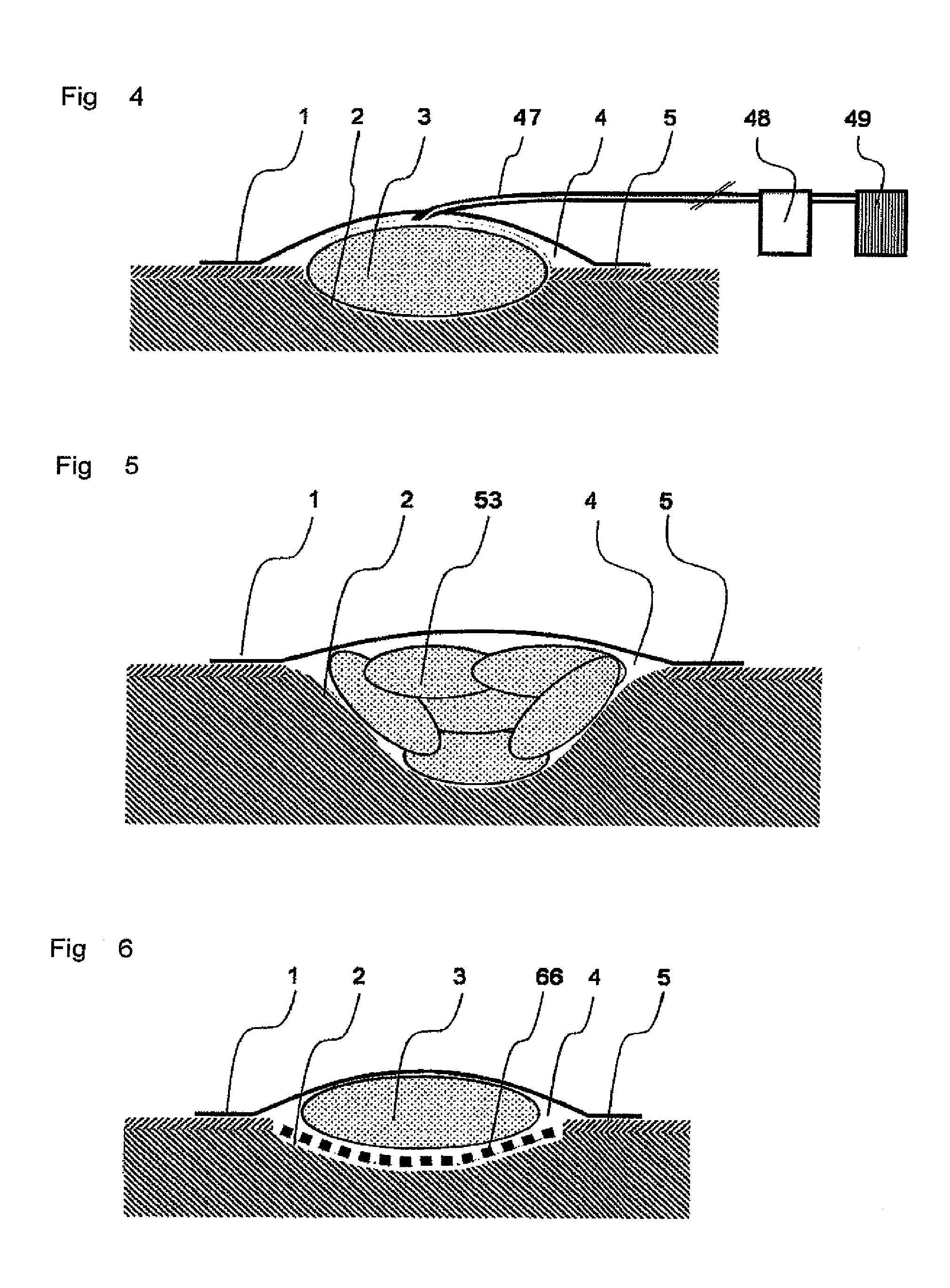Method for vacuum therapy of wounds
a vacuum therapy and wound technology, applied in the field of vacuum therapy of wounds, can solve the problems of tissue traumatization, narrow passages necessary for removal, and large effort required for adhering foam removal
- Summary
- Abstract
- Description
- Claims
- Application Information
AI Technical Summary
Benefits of technology
Problems solved by technology
Method used
Image
Examples
example 1
[0186]Vacuum therapy of a wound is performed on a patient by first inserting a sterile activated absorbent / rinsing body (TenderWet®, Paul Hartmann AG, Germany) of a suitable size into the wound space. Thereafter, the wound is closed air-tight with a cover film (Hydrofilm®, Paul Hartmann AG, Germany). The self-adhesive cover film is attached on the undamaged skin in the region immediately surrounding the wound. A hole measuring approx. 0.5 cm is cut into the center of the cover film. A PPM-Drainageport® (Phametra-Pharma and Medica-Trading GmbH) is placed over the hole and attached in an air-tight fashion. The drainage port is connected to the vacuum system by means of a tube. A constant vacuum of 125 mm Hg is applied. The dressing is changed and the progress of healing is inspected after three days.
example 2
[0187]Vacuum therapy of a wound is performed as described in Example 1 except that, before insertion of the absorbent / rinsing body, a layer of Atrauman Ag® (Paul Hartmann AG, Germany) is applied directly to the base of the wound as a wound contact layer.
example 3
[0188]Vacuum therapy of a wound is performed as described in Example 2 except that, before insertion of the absorbent / rinsing body, a layer of Hydrotüll® (Paul Hartmann AG, Germany) is applied directly to the base of the wound as a wound contact layer.
PUM
| Property | Measurement | Unit |
|---|---|---|
| viscosity | aaaaa | aaaaa |
| viscosity | aaaaa | aaaaa |
| hole sizes | aaaaa | aaaaa |
Abstract
Description
Claims
Application Information
 Login to View More
Login to View More - R&D
- Intellectual Property
- Life Sciences
- Materials
- Tech Scout
- Unparalleled Data Quality
- Higher Quality Content
- 60% Fewer Hallucinations
Browse by: Latest US Patents, China's latest patents, Technical Efficacy Thesaurus, Application Domain, Technology Topic, Popular Technical Reports.
© 2025 PatSnap. All rights reserved.Legal|Privacy policy|Modern Slavery Act Transparency Statement|Sitemap|About US| Contact US: help@patsnap.com



